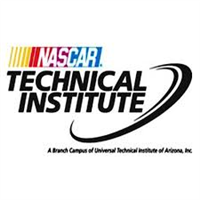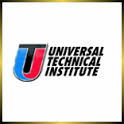What do they do?
Install, adjust, or maintain mobile electronics communication equipment, including sound, sonar, security, navigation, and surveillance systems on trains, watercraft, or other mobile equipment.
Also known as:
Critical Systems Technician, Electronic Bench Technician, Electronics Mechanic, Locomotive Electrician, Power Technician (Power Tech), Ship Yard Electrical Person
-
0%
Change
Ranks #27 in job growth rate0Job Openings
Ranks #32 in net job growth
Colleges with the most graduates that become Electrical and Electronics Installers and Repairers, Transportation Equipment
Looking for colleges that offer a specific major? Use the College Match Tool to find your best-matched schools and discover your estimated Net Price!
- High school diploma equivalent (32%)
- Some college, no degree (28%)
- Associate's degree (21%)
- Bachelor's degree (9%)
- Less than high school diploma (8%)
- Doctorate or Professional Degree (1%)
- Master's degree (1%)
People in this career often have these skills:
- Critical Thinking - Using logic and reasoning to identify the strengths and weaknesses of alternative solutions, conclusions, or approaches to problems.
- Active Listening - Giving full attention to what other people are saying, taking time to understand the points being made, asking questions as appropriate, and not interrupting at inappropriate times.
People in this career often know a lot about:
- Engineering and Technology - Knowledge of the practical application of engineering science and technology. This includes applying principles, techniques, procedures, and equipment to the design and production of various goods and services.
- Computers and Electronics - Knowledge of circuit boards, processors, chips, electronic equipment, and computer hardware and software, including applications and programming.
- Mathematics - Knowledge of arithmetic, algebra, geometry, calculus, statistics, and their applications.
- Public Safety and Security - Knowledge of relevant equipment, policies, procedures, and strategies to promote effective local, state, or national security operations for the protection of people, data, property, and institutions.
- Mechanical - Knowledge of machines and tools, including their designs, uses, repair, and maintenance.
- Design - Knowledge of design techniques, tools, and principles involved in production of precision technical plans, blueprints, drawings, and models.
- English Language - Knowledge of the structure and content of the English language including the meaning and spelling of words, rules of composition, and grammar.
- Telecommunications - Knowledge of transmission, broadcasting, switching, control, and operation of telecommunications systems.
- Education and Training - Knowledge of principles and methods for curriculum and training design, teaching and instruction for individuals and groups, and the measurement of training effects.
- Customer and Personal Service - Knowledge of principles and processes for providing customer and personal services. This includes customer needs assessment, meeting quality standards for services, and evaluation of customer satisfaction.
- Production and Processing - Knowledge of raw materials, production processes, quality control, costs, and other techniques for maximizing the effective manufacture and distribution of goods.
People in this career often have talent in:
- Arm-Hand Steadiness - The ability to keep your hand and arm steady while moving your arm or while holding your arm and hand in one position.
- Near Vision - The ability to see details at close range (within a few feet of the observer).
- Problem Sensitivity - The ability to tell when something is wrong or is likely to go wrong. It does not involve solving the problem, only recognizing that there is a problem.
- Manual Dexterity - The ability to quickly move your hand, your hand together with your arm, or your two hands to grasp, manipulate, or assemble objects.
- Finger Dexterity - The ability to make precisely coordinated movements of the fingers of one or both hands to grasp, manipulate, or assemble very small objects.
- Visual Color Discrimination - The ability to match or detect differences between colors, including shades of color and brightness.
People in this career often do these activities:
- Inspect electrical or electronic systems for defects.
- Test electrical equipment or systems to ensure proper functioning.
- Test electrical circuits or components for proper functioning.
- Reassemble equipment after repair.
- Confer with customers or users to assess problems.
- Adjust equipment to ensure optimal performance.
- Repair electrical circuits or wiring.
- Install heating, ventilation, or air conditioning (HVAC) equipment.
- Connect electrical components or equipment.
- Solder parts or connections between parts.
- Maintain repair or maintenance records.
- Read technical information needed to perform maintenance or repairs.
- Install electrical components, equipment, or systems.
- Repair electronic equipment.
- Rebuild parts or components.
- Drill holes in parts, equipment, or materials.
- Estimate costs for labor or materials.
- Measure distances or dimensions.
- Cut materials according to specifications or needs.
This page includes data from:

 Occupation statistics: USDOL U.S. Bureau of Labor Statistics Occupational Employment Statistics
Occupation statistics: USDOL U.S. Bureau of Labor Statistics Occupational Employment Statistics
 Videos: CareerOneStop, USDOL/ETA and the Minnesota Department of Employment & Economic Development
Videos: CareerOneStop, USDOL/ETA and the Minnesota Department of Employment & Economic Development
































